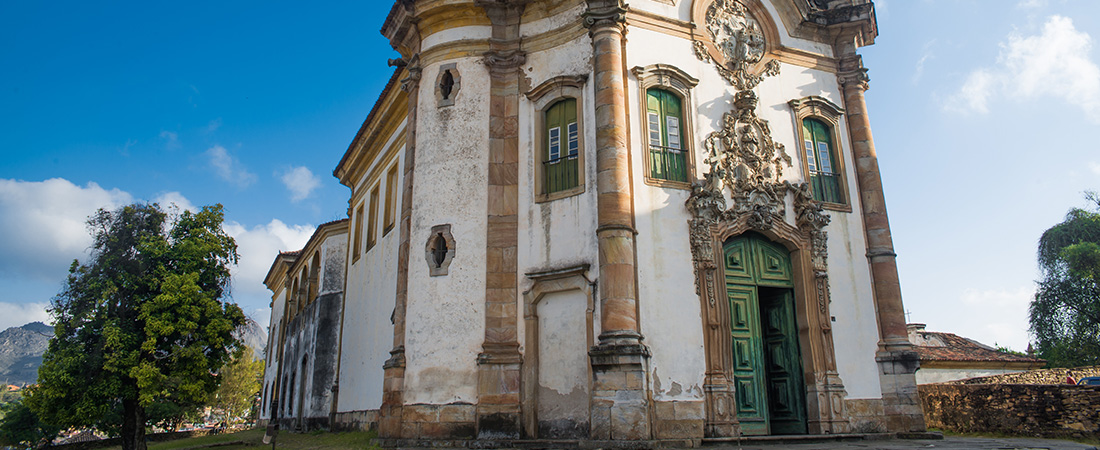2nd Period – 1930-1970
In the decade of 1930 the Rio de Janeiro National Music Institute, currently known as the Rio de Janeiro Federal University’s School of Music, started the publication of Revista Brasileira de Música (Brazilian Music Magazine), with the musicologist Luis Heitor Correa de Azevedo (1905-1992) as curator. The first issues launched a series titled Archivo de Música Brasileira (Brazilian Music Archive) that brought to the public some works from the 19th century, whose manuscripts belong to the rich collection of the institution's library. Among the published works we can find the Tantum Ergo (CPM 86) (CMSRB-161/006), and Missa dos Defuntos (CPM 184) (CMSRB-142/003, 142/004, 142/005, 142/008), by José Maurício, and the Cântico Religioso (CMSRB-116/001) and also O Salutaris, (in two versions) (CMSRB-122/003 and CMSRB-122/012), by Francisco Manuel da Silva.
Still in the same decade, we find two publications of works by José Maurício. The first is Ingemisco (CMSRB-087/003), an exact copy, using the same plates, from the corresponding passage of the full edition of the Requiem. It was a supplement of the magazine Ilustração Musical, published in October 1930, to mark the centenary of the author’s death. The second one is Kyrie, part of Missa de Requiem (1816) (CMSRB-097/009), published by Casa Arthur Napoleão, including an arrangement for voices a cappella made by Heitor Villa-Lobos (1887-1959), in reality, a mere transcription of the vocal parts from the original, without accompaniment. It is part of the series called Collecção Escolar, published at the time when Villa-Lobos was the director of Musical and Artistic Education Department (Serviço de Educação Musical e Artística – SEMA), from 1932 onwards.
The magazine Musica Sacra, by Editora Vozes de Petrópolis (RJ), established in 1941, adopted the practice of publishing separatas presenting sacred music of various periods and origins. José Maurício had many of his works published in such separatas: 3o. Responsório das Matinas de Natal (December 1941) (CMSRB-135/001), Ave Maris Stella (October 1942) (CMSRB-019/002), Verbum caro factum est (November 1942) (CMSRB-173/001), Tantum Ergo (January 1943) (CMSRB-019/002), Hino das Matinas das Festas de SS.Virgem Maria (June 1943) (CMSRB-134/001), O magnum mysterium, (December 1944) (CMSRB-119/001), 1o. Responsório das Matinas de Natal (CMSRB-079/001), 2o. Responsório das Matinas de Natal, (November 1947) (CMSRB-080/001), 5o. Responsório das Matinas de Natal (December 1947) (CMSRB-022/001), Ave Maria das Matinas do Natal (September 1948) (CMSRB-018/015). Another composer from the 19th century, a Benedictine, Friar Antônio Patrocínio Araújo (1818-1876) had a O Domine Jesu Christe (CMSRB-117/001), published in 1948. We have to highlight the name of Friar Pedro Sinzig as the curator responsible for these publications.
Also worthy of mention is the 1943 individual publication in São Paulo of Lux aeterna of the Requiem (CMSRB-107/001), by José Maurício, arranged by José Cappochi.
In the decades of 1930 and 1940 Ave Marias and O Salutaris composed by late 19th and early 20th century authors keep on being reissued: Marieta Neto, Carlos Gomes, Abdon Milanez, Antonio Ferreira do Rego and Arnaud Gouvêa. New firms replace the previous ones: E.S. Mangione, Irmãos Vitale and Edição EAM, in a dynamic process characteristic of the time.
In the decade of 1940, the German-Uruguayan Francisco Curt Lange (1903-1997) performs an important and pioneering research in the music collections from Minas Gerais, bringing to light the enormous music history of the region. One of the results of his research was the publication of a volume focusing on the work of Minas-born authors from the 19th century: Novena de Nossa Senhora do Pilar, by Francisco Gomes da Rocha (1746-1808) (CMSRB-170/002), Antífona de Nossa Senhora – Salve Regina (MIG 40), by Lobo de Mesquita (1746?-1805) (CMSRB-145/006) and Hino Maria Mater Gratiae, by Marcos Coelho Neto (18th/19th century) (CMSRB-109/001). The collection, titled Archivo de musica religiosa de la Capitania Geral, was published by Cuyo University, in Mendoza, Argentina, in 1951.
At the close of this second phase of publications, we still have some isolated initiatives: the Missa a 8 vozes by André da Silva Gomes (1752-1844) (CMSRB-097/021), published in 1966 by Brasilia University, edited by musicologist Régis Duprat, which had prominent participation in the editorial world from the 1990s; the Te Deum, by Luiz Álvares Pinto (1719?-1789?) (CMSRB-163/007), published by Jaime Diniz (1924-1989) in 1968; a second edition of Missa em Si bemol, by José Maurício (CMSRB-097/002), launched by Vozes in 1957, edited by René Maria Brighenti.
One can note in this second period that publications begin to be associated with the academic environment, as is the case of Revista Brasileira de Música, in the 1930s, the Archivo de musica religiosa de la Capitania Geral, by Curt Lange and the publications by Jaime Diniz and Régis Duprat. The performance of the repertoire in liturgical functions is emphasized by the Revista Música Sacra and the phenomenon of the republication of works by composers of the end of the 19th century and beginning of the 20th century continues, showing the strength of the repertoire.
© 2017 Carlos Alberto Figueiredo | All rights reserved.


